Curtain Wall Aluminum Sections
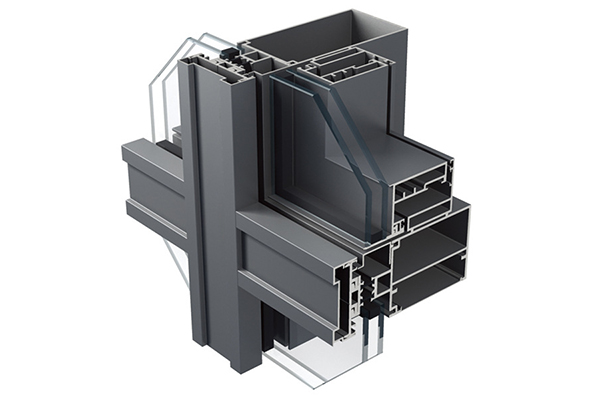
Curtain walls are non-structural outer coverings that are attached to a building’s framework. They are designed to resist air and water infiltration, support their own dead load weight forces, and withstand wind loads. Curtain walls are typically made of lightweight materials such as glass, metal panels, or a combination of both.
Curtain wall aluminum sections represent a harmonious blend of form and function in modern architecture. As the demand for sustainable and visually striking building solutions continues to rise, these sections will likely play an even more significant role in shaping the skylines of our cities. With ongoing advancements in technology and design, the future of curtain wall systems promises to be even more efficient, durable, and aesthetically captivating.
Glass Curtain Walls Aluminum Profile System
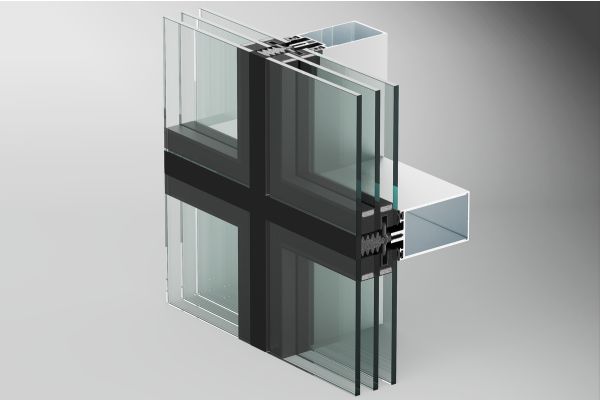
Frameless Glass Curtain Wall
In frameless glass curtain walls, the support system is deliberately minimalistic to achieve an unobstructed and seamless appearance. Aluminum profiles, if used, are discreet and typically limited to connection points between glass panels. The primary focus is on maintaining transparency, and the aluminum support is engineered to be as inconspicuous as possible while providing necessary structural stability. The profiles may be hidden within the construction or feature a slim, elegant design that complements the overall aesthetic.
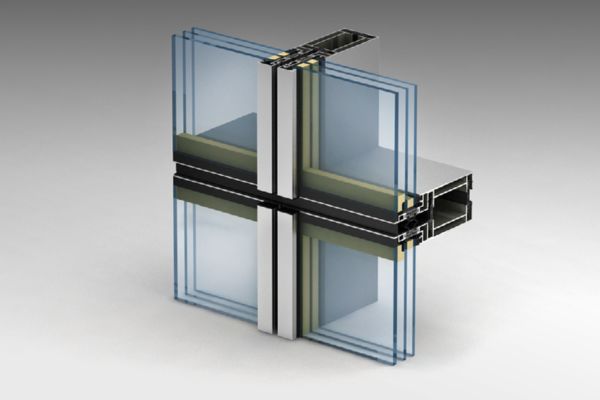
Semi-Frameless Glass Curtain Wall
Semi-frameless glass curtain walls strike a balance between structural support and transparency. Aluminum profiles are strategically placed around the perimeter and intermittently between glass panels. The framing serves both aesthetic and functional purposes, providing stability while minimizing visual interruptions. These profiles may have a slightly more pronounced presence than in frameless systems but are still designed to enhance the overall modern and sleek appearance of the facade.
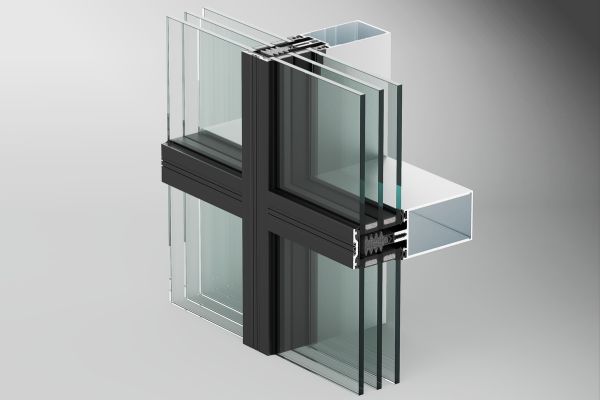
Framed Glass Curtain Wall
Framed glass curtain walls utilize more extensive aluminum profiles to provide robust structural support. These frames surround and encapsulate the glass panels, offering a traditional yet versatile design. Aluminum is a popular choice for these frames due to its lightweight nature, durability, and resistance to corrosion. The frames can be customized in terms of size, shape, and finish to accommodate diverse architectural styles. The visible framing elements contribute to the overall aesthetics, offering opportunities for design embellishments and color choices.
Customize Your Aluminum Profile
Specification
| Material | 6000 Series aluminum alloy |
| Temper | T3-T8 |
| Thickness |
General profiles thickness: 0.8mm—1.4mm; Anodizing protection thickness: 8-12 micron; Normal powder coated thickness: 60-100 micron |
| Surface treatment | Anodizing, Electroplating, Polishing, Sandblasted, Powder coating, Brushed, PVDF, etc. |
| Color | Customized Color |
| MOQ | 500KG |
| Delivery time | 15-20 days after sample confirmed & down payment, or negotiated |
| Port | Guangzhou,Ningbo, Shanghai |
Reliable Windows Aluminium Profiles Supplier
HTS NEW MATERIALS is a professional aluminum extrusion profile manufacturer from China. With expertise in mold design, melting, extrusion, oxidation, electrophoresis, coating, and polishing, we offer a comprehensive range of services.
Our product portfolio includes aluminum profiles for windows and doors, industrial applications, and photovoltaic systems. Located in Jiangxi, our production facility spans 30,000 square meters and employs over 200 skilled professionals, allowing us to produce over 10,000 metric tons of aluminum profiles annually.
Factory
We specialize in manufacturing high-quality, precision-engineered aluminum profiles for various industries. With state-of-the-art equipment and a skilled workforce, we produce complex profiles with exceptional dimensional accuracy using premium-grade aluminum alloys. Our customization options allow us to create unique profiles with intricate shapes, precise tolerances, and various surface finishes, tailored to your specific requirements. Quality is paramount to us, and we adhere to rigorous quality control measures throughout the manufacturing process. Our commitment to environmental sustainability is reflected in our eco-friendly practices, such as recycling aluminum scraps and optimizing energy consumption.

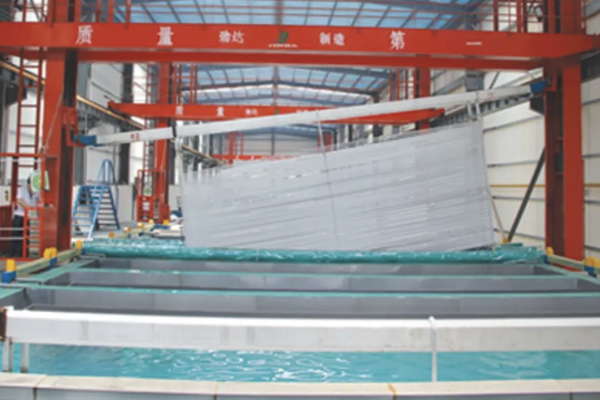
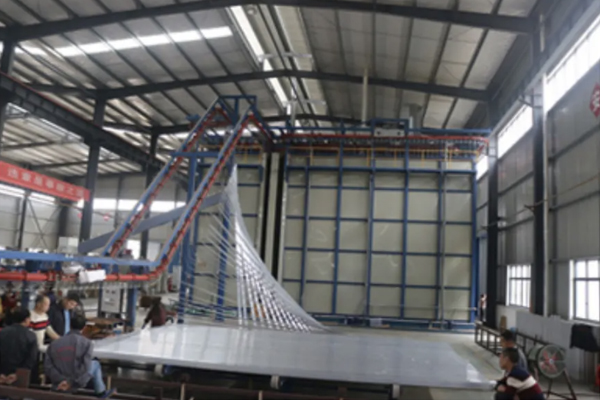
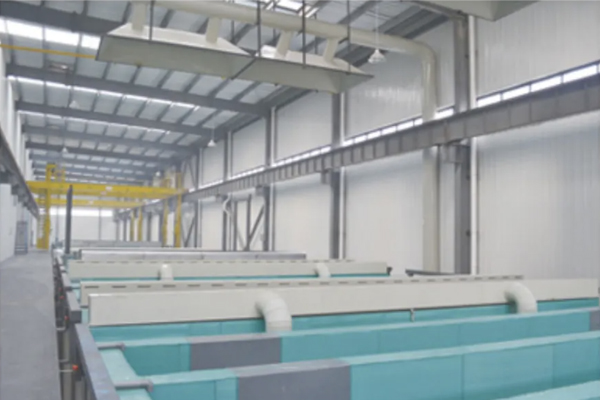
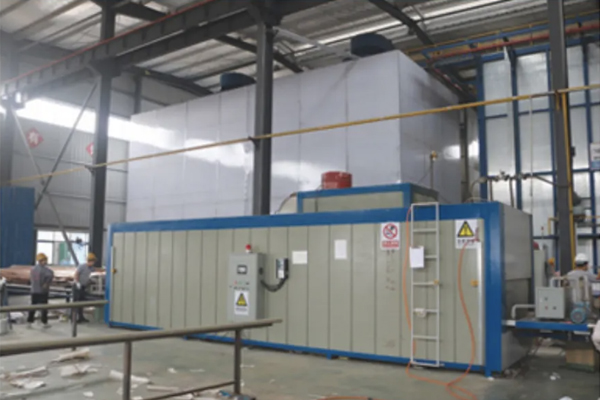

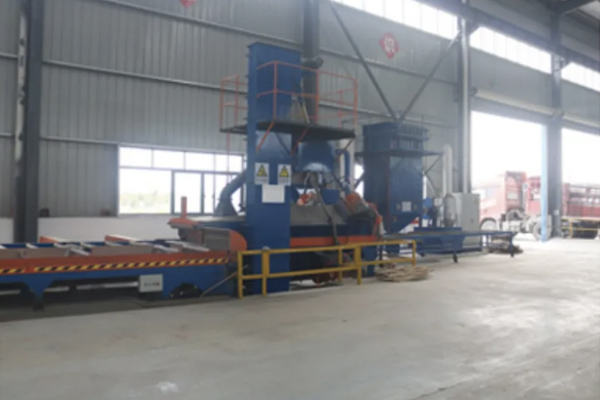
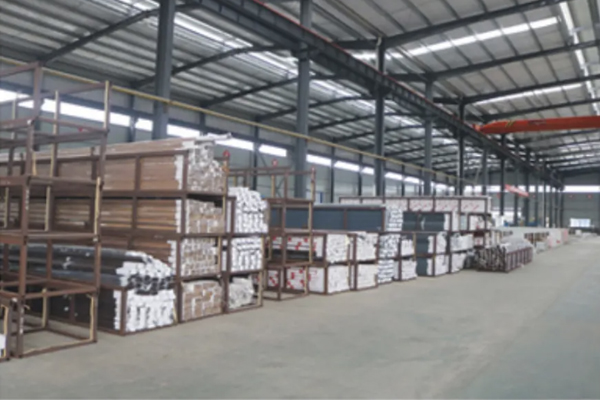
Raw Material
When choosing the aluminum alloy for curtain wall profiles, architects and design teams need to consider several factors, including strength, weather resistance, processing performance, and aesthetic requirements. Here are some recommendations for selecting aluminum alloy grades for curtain wall profiles.

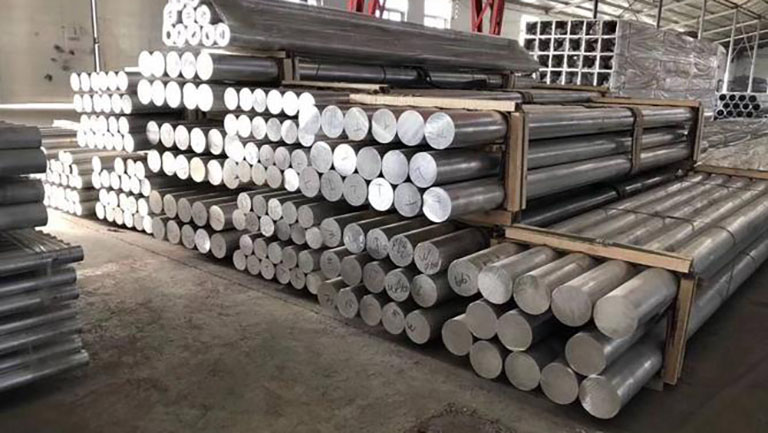
1. Strength Requirements:
6xxx Series: Alloys such as 6061 and 6063 in this series typically exhibit high strength. They are suitable for large curtain wall projects that need to withstand substantial loads and wind pressures. 6063 alloy is commonly used in construction, offering a good balance between strength and processing capabilities.
2. Weather Resistance:
6061 and 6063 Alloys: Both of these alloys demonstrate good weather resistance. They are relatively corrosion-resistant in most environmental conditions, but in marine environments, additional protective measures or more corrosion-resistant alloys may be considered.
3. Processing Performance:
6063 Alloy: Due to its excellent processing performance, 6063 alloy is often preferred. It is easily machinable, weldable, and formable, facilitating the realization of various shapes and curves in design. This is particularly important for customized, complex curtain wall projects.
4. Aesthetic Requirements:
Surface Treatments: Different alloys can meet aesthetic requirements through various surface treatments. Anodizing, powder coating, and other treatments offer a range of colors and surface textures, aligning with the visual design needs of the building facade.
5. Cost-Effectiveness:
6063 Alloy: With its widespread use and relatively economical cost, 6063 alloy demonstrates cost-effectiveness. This makes it an ideal choice for many small to medium-sized curtain wall projects.
6. Special Environmental Considerations:
7000 Series Alloys: For environments requiring higher strength and corrosion resistance, such as high-altitude areas or harsh climates, consideration may be given to alloys in the 7000 series.
Advantages of Aluminum Alloy Curtain Walls
Lightweight and Durable: Curtain wall aluminum sections are favored for their exceptional strength-to-weight ratio. Aluminum is inherently lightweight, making it an ideal material for constructing large-scale curtain walls without imposing excessive loads on the building’s structure. Despite its lightness, aluminum is incredibly durable and resistant to corrosion, ensuring longevity and minimal maintenance requirements.
Design Flexibility: One of the key advantages of aluminum sections is their malleability. Architects and designers can create innovative and intricate designs, allowing for a wide range of shapes and configurations. This flexibility is vital in achieving the desired aesthetic appeal of modern buildings, where unique and bold designs often define architectural excellence.
Thermal Performance: Curtain wall aluminum sections contribute to the overall energy efficiency of a building. Aluminum’s thermal conductivity allows for the inclusion of thermal breaks — materials with low thermal conductivity inserted between the aluminum sections — which helps reduce heat transfer between the interior and exterior of the building. This aids in maintaining a comfortable indoor temperature and contributes to energy savings.
Ease of Installation: Aluminum’s lightweight nature not only simplifies the construction process but also makes installation more straightforward. The prefabricated nature of aluminum sections allows for efficient on-site assembly, reducing construction time and labor costs.
Environmental Sustainability: Aluminum is a highly recyclable material, and the curtain wall aluminum sections can often be recycled at the end of their lifecycle. This contributes to the overall sustainability of a building, aligning with the growing trend in the construction industry towards environmentally friendly practices.
How to Produce Aluminum Profile
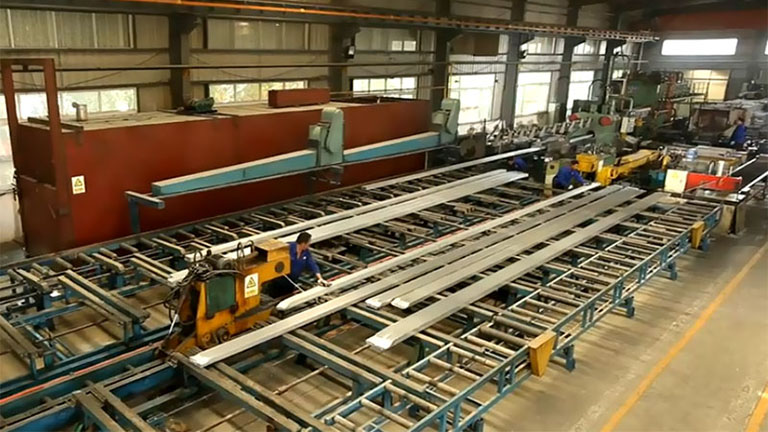
Aluminum profiles for doors and windows are manufactured using high-quality aluminum alloys, specifically designed for their structural integrity, durability, and corrosion resistance. The primary raw material used in the production of these profiles is aluminum extrusion billets.
Aluminum extrusion billets are cylindrical logs or ingots made from a blend of aluminum and various alloying elements. These alloying elements, such as silicon, magnesium, manganese, and copper, are added in precise proportions to enhance the strength, ductility, and other desired properties of the final aluminum profiles.
The billets undergo a series of processes to convert them into the desired profiles for doors and windows. The first step is heating the billets to a specific temperature, making them soft and malleable. Then, they are forced through a specially designed die under high pressure, using an extrusion press. The die imparts the desired shape and cross-sectional profile to the aluminum, resulting in the extruded profiles.
After extrusion, the profiles undergo various finishing processes, such as cutting, machining, surface treatment, and powder coating. These processes further enhance the aesthetics, functionality, and durability of the profiles, making them suitable for use in doors and windows.
Considerations for Curtain Wall Aluminum Profile
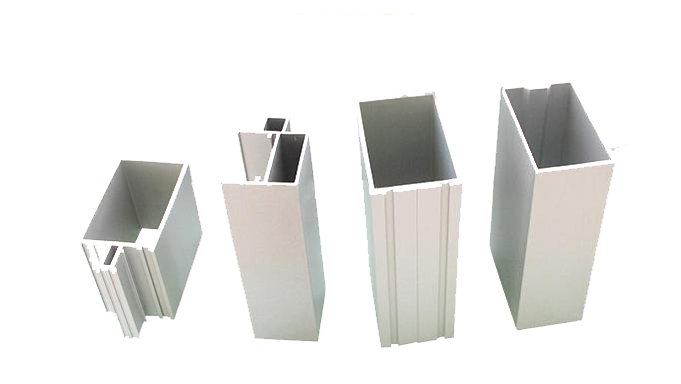
Material Strength: The aluminum profiles used in curtain walls must meet specific strength requirements to withstand wind loads, seismic forces, and other environmental factors. The material’s strength directly impacts the overall stability and longevity of the curtain wall system.
Thermal Performance: Thermal break technology is often incorporated into aluminum profiles to enhance the energy efficiency of the curtain wall. This involves inserting materials with low thermal conductivity to reduce heat transfer, contributing to improved insulation and energy conservation.
Customization and Finish: The ability to customize aluminum profiles in terms of size, shape, and finish allows architects to achieve their desired aesthetic vision. Anodized or powder-coated finishes can enhance the appearance, providing both visual appeal and protection against corrosion.
Installation and Assembly: The ease of installation and assembly is a crucial consideration in the choice of aluminum profiles. Prefabricated systems that allow for efficient on-site assembly contribute to cost-effectiveness and streamlined construction processes.
How does custom window aluminum extrusion work
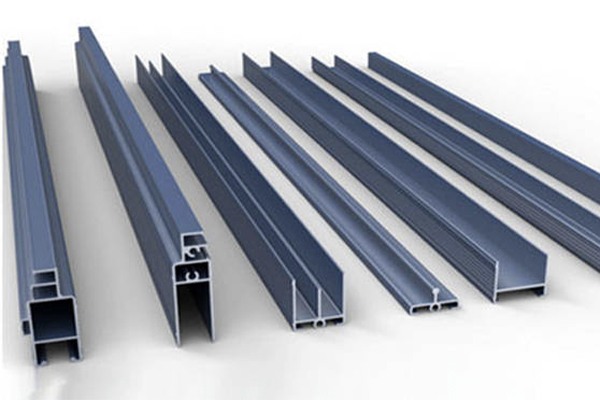
Step 1: Our engineer will review your detailed size or drawing and provide a cross-sectional drawing for your confirmation.
Step 2: We open dies for your custom extrusion, create a sample, and send it to you for approval.
Step 3: If modifications are needed, we adjust the die size until you are satisfied with the sample.
Step 4: We inspect the raw material using a spectrum analyzer and proceed with extrusion production, providing weekly progress updates.
Step 5: Depending on your desired surface finish, we offer anodizing, electrophoresis, powder coating, or PVDF options.
Step 6: To ensure safe transportation, we carefully pack your products to avoid any damage.
